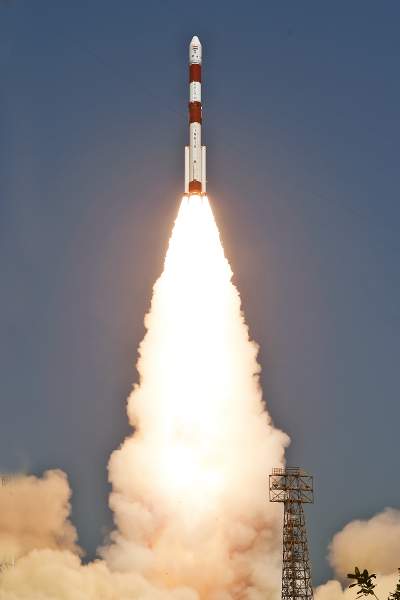PSLV-C51’s main excitement was carrying a satellite from Pixxel India, but a week before the launch, the company stated that due to “certain software issues” during testing, their satellite would not go with the launch. Still, ISRO’s PSLV-C51 Launch mission is a great achievement for India.
PSLV-C51 is India’s first launch of 2021 and 78th Launch Vehicle Mission from Satish Dhawan Space Centre (SDSC) SHAR.
PSLV-C51 is the 53rd mission of PSLV, and it launched Amazonia-1 of Brazil as primary satellite and 18 Co-passenger Satellites from SDSC SHAR, Sriharikota.
Also Read : Electric Vehicle Start-Up in India | Advantages of using Electric vehicle
Details of PSLV-C51 Launch Mission
- PSLV-C51 was launched from the FIRST LAUNCHPAD of SDSC in Sriharikota, Andhra Pradesh, India.
- The PSLV-C51 rocket carried primary satellite, Amazonia-1 and 18 secondary satellites.
- The launch was scheduled at 10:24 AM IST on February 28, 2021.
- This mission is the first dedicated commercial mission of NewSpace India Limited (NSIL). NSIL is a company of the Government of India under the Department of Space. NSIL is managing this mission under a commercial arrangement with Spaceflight Inc. USA.
Milestones of this launch
- This is the 1st launch of 2021.
- 39th launch from the First LaunchPad.
- This launch is the 78th Launch Vehicle Mission from SDSC SHAR.
- This was the 53rd flight of the Polar satellite launch vehicle (PSLV).
- With the launch of this mission, India launches a total of 342 foreign satellites from 34 countries across the globe.
- This was the 3rd flight of the PSLV-DL variant.
- 1st Dedicated PSLV commercial mission for NSIL.
Amazonia-1
Amazonia-1 is the optical earth observation satellite of the National Institute for Space Research (INPE), Brazil. Amazonia-1 is the first Satellite that is completely designed, integrated, tested, and operated by INPE.
The Amazonia-1 mission would further strengthen the existing structure by providing remote sensing data to users for monitoring deforestation in the Amazon region and analysis of diversified agriculture across the Brazilian territory.

Satellite Characteristics
| Amazonia-1 Mass | 637 |
| Payload | Optical Earth Observation[Wide field Imaging Camera] |
| Imaging Swath & Resolution | 850 km swath & 60 m resolution |
| Power | Lithium Ion Batteries; 2 solar arrays [3 panel on either side] |
| Propulsion | Hydrazine |
| Mission life | > 4 years |
Indian co-passenger satellites
Satish Dhawan SAT (SDSAT)
PSLV-C51 carries SDSAT built by Space Kidz India as a co-passenger payload. SDSAT is Nano-satellite intended to study the Radiation Levels/space Weather and demonstrate Long Range communication technologies.
UNITYsat
UNITYsat, the combination of ‘3 Satellites’ is designed and built as a Joint Development by Jeppiaar Institute of Technology, Sriperumbudur (JITsat), G. H. Raisoni College of Engineering, Nagpur (GHRCEsat) and Sri Shakthi Institute of Engineering and Technology, Coimbatore (Sri Shakthi Sat). The Satellite is intended for providing Radio relay services.
| Satellite Name | Number of Satellites | Country | Mission Objective of the Satellite |
| SIndhuNetra | 1 | India | Technology Demonstration |
| SAI-1 NanoConnect-2 | 1 | USA | Technology Demonstration |
| SpaceBEEs | 12 | USA | 2-way satellite communications and data relay |
Prime Minister Narendra Modi congratulates President of Brazil, Jair Bolsonaro and ISRO on the successful launch of Brazil’s Amazonia-1 satellite by ISRO’s PSLV-C51.
ISRO also tweeted, ” Mission accomplished..”
Stay connected for more news.
